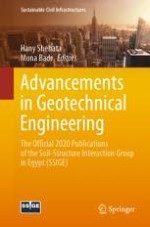
2021 | OriginalPaper | Chapter
Assignment of Groundwater Table in Liquefaction Analysis of Soils
Authors : Muhsiung Chang, Mei-Shan Chan, Ren-Chung Huang, Togani C. Upomo, Rini Kusumawardani
Published in: Advancements in Geotechnical Engineering
Publisher: Springer International Publishing
Activate our intelligent search to find suitable subject content or patents.
Select sections of text to find matching patents with Artificial Intelligence. powered by
Select sections of text to find additional relevant content using AI-assisted search. powered by